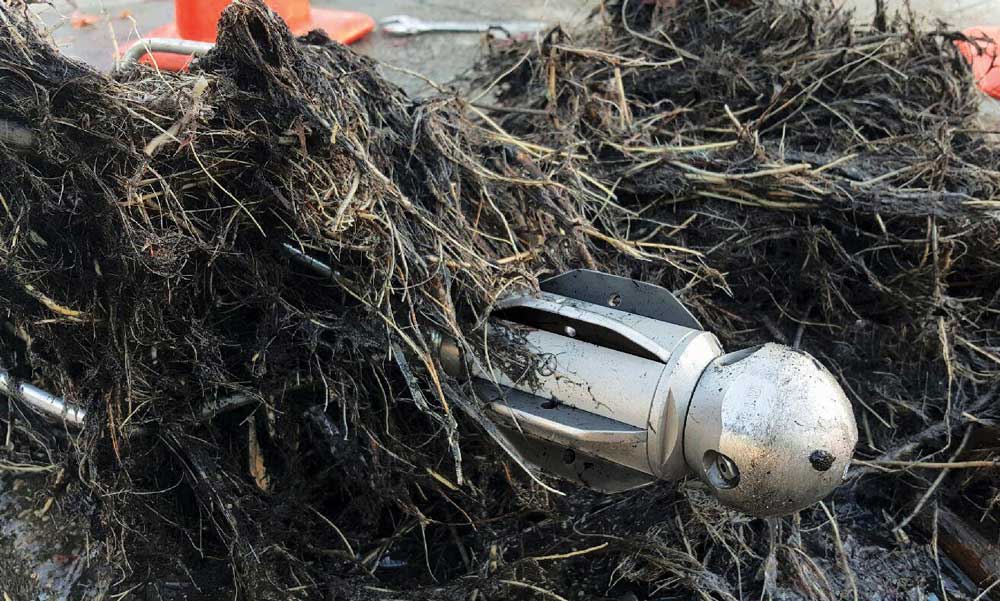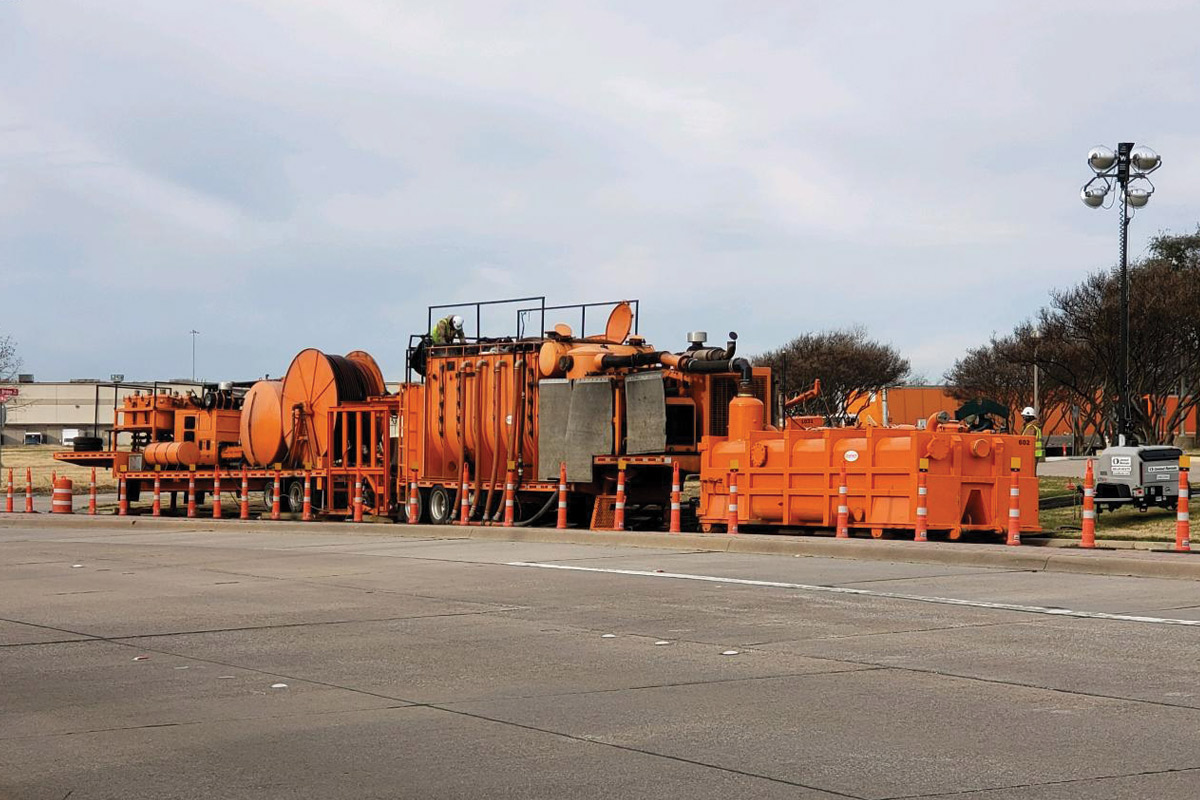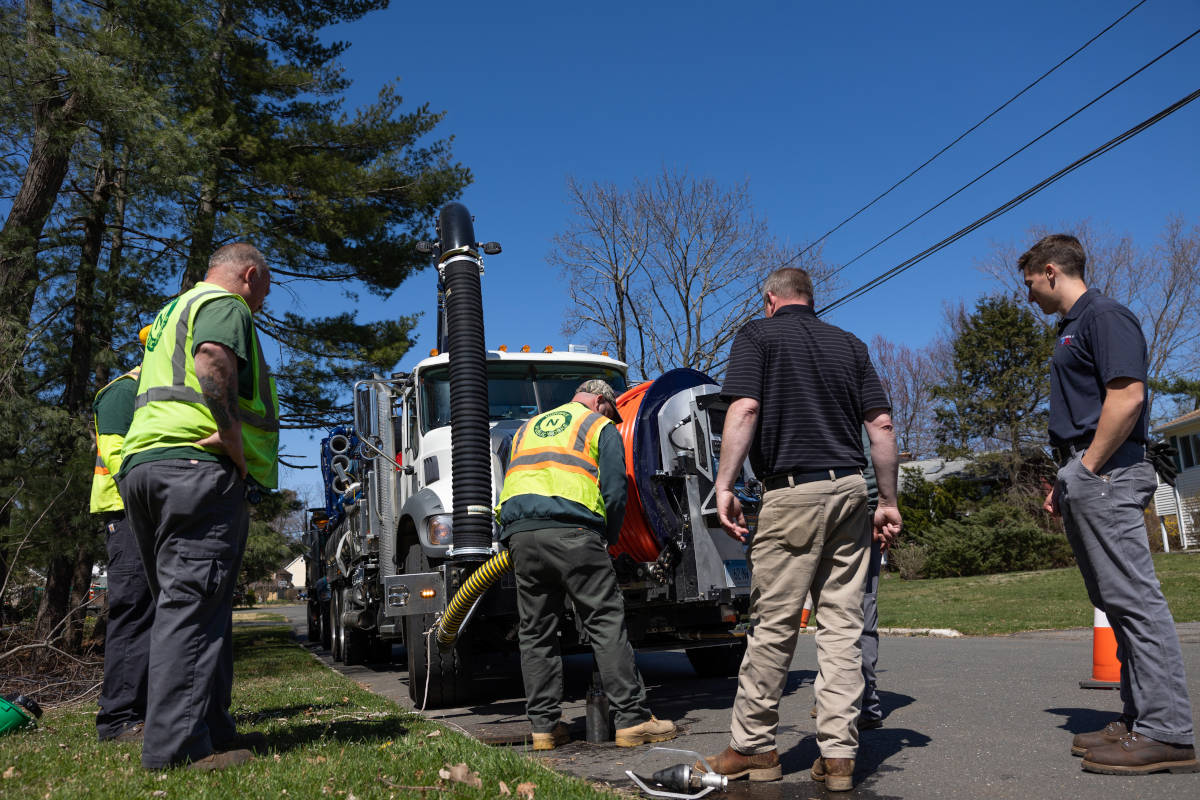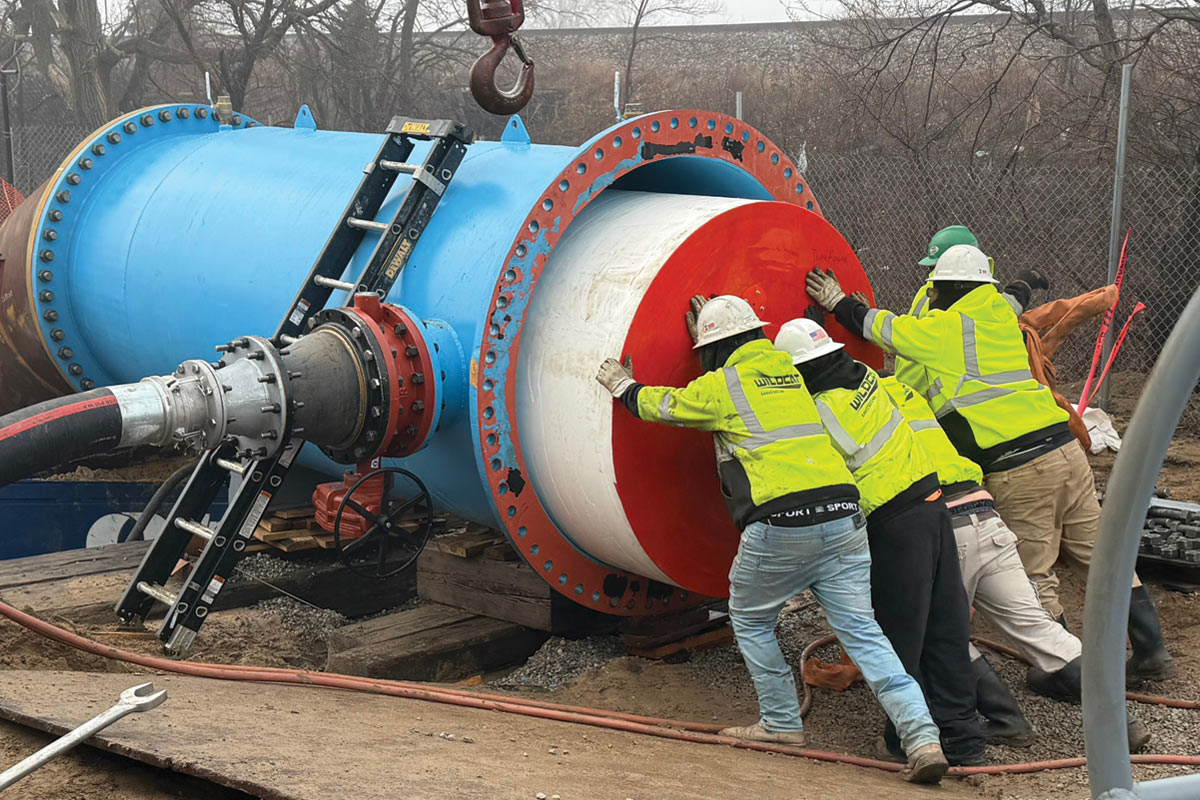
How to Select the Proper Nozzle for your Job
Hydro-jetting is one of the most common and most effective forms of cleaning sewers. By pumping water through a hose and using high-pressure jets to do the work, hydro-jetting removes debris and grease build ups, cuts roots, clears blockages and flushes the sewer pipe.
The nozzle is typically sent upstream from a manhole structure and pulled back under pressure, usually 50 to 80 gallons per minute (GPM) at 2,500 to 3,500 psi. Debris is then removed by means of vacuuming or by using specialty hand tools.
RELATED: How to Stay Safe While Cleaning Pipes
There are several variables to consider when selecting a jetting tool, or nozzle, for a pipe cleaning job. Whether you are focused on municipal cleaning and reducing SSOs, or commercial cleaning by the foot, making the right nozzle selection can have significant impact on your success. Here are some practical guidelines to help you make this important decision.
The first step is the sewer version of the timeless adage “measure twice, cut once” — that is, you need to understand what you’re getting into.
Consider what type of pipe you are cleaning:
- What material is the pipe made of? Flexible pipe materials are more susceptible to damage by waterjet or mechanical means. Additionally, pipe manufacturers can have limitations on jetting PSI, jet angles, dwell time and types of nozzles that can be used in the pipe. Determining what type of piping you are cleaning — rigid (vitrified clay, RCP), flexible (PVC, HDPE, fiberglass), or cured-in-place/lined pipe — will inform your decisions about nozzle type and approach.
- What is the condition of the pipe? Consider the age of the piping and whether there is internal damage, such as cracking, root intrusion, deflection or collapse.
- What is the size or inside diameter? The size of the pipe will determine the nozzle size, type and setup. Also, consider the use of jet extensions and centralizers to achieve the best cleaning possible.
Evaluate the cleaning history and or environmental factors related to the pipe:
- What type of blockage or fowling are you trying to remove? Different types of nozzles can effectively deal with common problems like debris, roots, grease or deposits.
- Assess the extent of the problem. Is the pipe fully or partially blocked? What type of blockage? Is the focus to clear blockages or to clean the walls of the pipe?
Camera systems are widely available and can be very helpful in identifying all of the above. However, technology is yet to replace the power and flexibility of human deduction.
Examine all the information available to you about the site to determine the cause of the problem. Fats, oils and grease (FOG) likely clog drains leading from restaurants, multi-family dwellings and any kind of institution involving food. When working at industrial facilities, consider the types of materials that might be flushed. Likelihood of root intrusion can also be evaluated.
Static Nozzles
Non-rotational fixed nozzles are manufactured in a variety of sizes and shapes that meet the criteria for standard cleaning operations.
- Cleaning nozzles are primarily used to clean the entire circumference of smaller diameter sewer pipes. Jets are radially located, using a higher jetting angle (21 to 45 degrees).
- Flushing nozzle are primarily used to move debris from the bottom of smaller sewer pipes with the use of radially located, lower degreed jets (6 to 20 degrees).
- Stoppage nozzle – are used to break up sewer blockages with the use of forward-facing jets and rear facing thrust jets which penetrate and break-up a stoppage.
- Dredging nozzle are weighted nozzles primarily used to move debris from the bottom of larger sewer pipes with the use of lower degreed jets (6 to 20 degrees).
Rotational Nozzles

Rotational nozzles can be used to dislodge fibrous roots.
Rotational, or rotary, nozzles deliver water throughout the entire internal circumference of the sewer pipe, using a revolving jet head. Rotary nozzles can be used for almost any type of blockage or pipe because they can be configured to suit different scenarios, including clearing blockages; removing fat, grease, scale, and deposits; dislodging fibrous roots; and flushing silt and soil. Rotating nozzles provide complete coverage of the pipe with less jets – and using less jets means more of the pump’s power is delivered to the surface.
RELATED: Welcome to Pipe Cleaning PRO

Rotary nozzles are designed to deliver water throughout the internal circumference of the pipe.
- Controlled rotational nozzles utilize an internal clutching mechanism to automatically govern the rotational speed of the head delivering a consistent jetting speed and impact to the pipe wall regardless of the pressure and gallons per minute (GPM) delivered to the nozzle.
- Spinning nozzles are not speed-governed, thus deliver variable speed and velocity water jets to the circumference adjusted by the operator at the pump control.
- Switching nozzles are a recent addition to the market. With these nozzles, water flow can be alternated between two sets of jets, so the full power of the pump can be directed at pulling or cleaning individually. Switching nozzles are especially useful if you need extra thrust from the rear jets for a long or uphill run before switching full cleaning power to the front and/or side jets.
Specialty Hydro-Mechanical Nozzles

Cutting nozzles are effective for combatting thick roots.
- Cutting nozzles are effective for thick roots (tap roots). However, they may become stuck in the pipe and require additional servicing to mechanical components.
- Chain flail nozzles are great for roots or extremely hard scale, but you must be careful not to damage the pipe.
Keep in mind that with water-powered nozzles, rear jets are required to propel the tool forward through the pipe. While offering some cleaning and flushing power, the forward thrust of the rear jets must be balanced against any front jets used to clear blockages and/or side cleaning jets.
Whether it’s a static or rotational hydro-jet nozzle, a low number of larger orifice jets will ensure greater force and cleaning strength across the pipe circumference. A higher number of jets with small orifices will enable more spreading of the water for cleaning while the impact force is weaker across the pipe circumference.
Stone Age Inc. with special help from Kent Carlson, operations manager retired for City of Los Angeles Wastewater Collection Systems Division.




